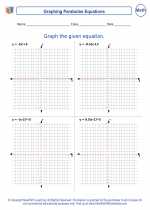Nonlinear Functions and Set Theory -> domain and range
Domain and Range Study Guide
Definition:
The domain of a function is the set of all possible input values (x-values) for which the function is defined. In other words, it represents all the x-values that the function can accept.
The range of a function is the set of all possible output values (y-values) that the function can produce for the given input values. It represents all the y-values that the function can output.
Finding the Domain:
To find the domain of a function, you need to identify any restrictions on the input values. This may include avoiding division by zero, square roots of negative numbers, or any other operations that result in undefined values. For example, the domain of a square root function would exclude any negative values inside the square root, as it would result in imaginary numbers.
Finding the Range:
Finding the range of a function involves determining all the possible output values that the function can produce. This can often be done by analyzing the behavior of the function, including its minimum and maximum values, and any other restrictions that may apply.
Representing Domain and Range:
Domain and range can be represented in various ways, including:
- Using set notation: { x | x is a real number }
- Interval notation: (a, b) or [a, b]
- Graphically, on a coordinate plane
Examples:
Let's consider a few examples to illustrate the concept of domain and range:
Example 1:
Given the function f(x) = 2x + 3, the domain is all real numbers, since there are no restrictions on the input values. The range is also all real numbers, as the function can produce any real number as output.
Example 2:
For the function g(x) = 1/x, the domain is all real numbers except for x = 0, as division by zero is undefined. The range is all real numbers except for y = 0, since the function cannot output zero when x is not zero.
Practice Problems:
Now, let's practice finding the domain and range for the following functions:
- f(x) = x^2 - 4
- g(x) = √(x + 2)
- h(x) = 1/(x - 3)
Conclusion:
Understanding domain and range is crucial for analyzing the behavior of functions and identifying the set of input and output values. By mastering this concept, you'll be able to confidently work with various functions and understand their behavior in different scenarios.
.◂Math Worksheets and Study Guides Seventh Grade. Nonlinear Functions and Set Theory

 Worksheet/Answer key
Worksheet/Answer key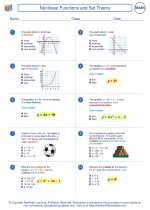
 Worksheet/Answer key
Worksheet/Answer key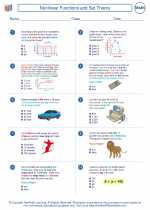
 Worksheet/Answer key
Worksheet/Answer key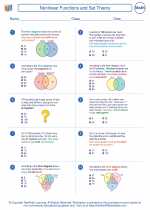
 Worksheet/Answer key
Worksheet/Answer key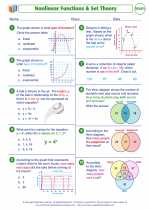
 Worksheet/Answer key
Worksheet/Answer key